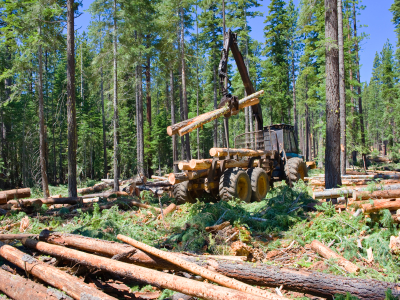The harvest planning process can be extremely complex for one of our clients. The company must honor environmental laws and policies. There are other considerations such as road access and available harvest equipment. Some tracts are located in the river bottoms and are difficult to harvest in wet weather. Soil types and rainfall can vary from site to site within the forest.
A Case Study
In one region the client company operates sawmills and a veneer plant. The mills are geographically dispersed within a 50 mile radius. Timberlands are sometimes located more than 100 miles from a mill site. Each mill has different manufacturing capabilities that yield different values from the logs. One sawmill has curve sawing capabilities that allow it to better process certain log types than other sawmills in the area. Another facility is capable of merchandising logs to be used in the local large sawmill, small sawmill or veneer mill.
The Problem
The company faces a complex decision environment in the sourcing of logs for manufacturing. Planners must consider profit-sensitive questions related to manufacturing efficiencies and costs, outsourcing options, log inventory constraints and transportation costs. Literally thousands of variables are in play within this business environment.
This client understands that a comprehensive modeling tool will allow a business to make much better decisions than simply cranking options through a spreadsheet. The Optware System is designed to maximize profit subject to the business constraints, process flows, revenues and costs. The central technology that drives the system is a powerful linear-programming-based optimizer.
The Solution
Once the project was initiated, Optware Solutions was able to analyze the business and deliver a working system tailored to the client’s needs within six months. The System was designed to integrate with existing information systems for much of the required modeling data.
The client uses the system for both strategic and tactical uses. Strategic runs are often made early in the year to assess “big-picture” issues. Tactical runs are made on a weekly routine. Many people are involved in the process. In some cases, intranet interfaces have been employed to facilitate data passage to the Optware System. Individual foresters are responsible for communicating harvest availability by timber tract. It is their insights that play a key role in the quality of the solution implementation.
Profit Optimization technology allows companies to treat dispersed operations as a single entity and to capture synergies across the business unit. The tool provides our clients with much greater insight about their businesses and the impact of product mix and log sourcing on operations. The results lead to an improved planning process and higher profits!

Contact Optware today to schedule a consultation
503-645-2390 | info@optware.com



